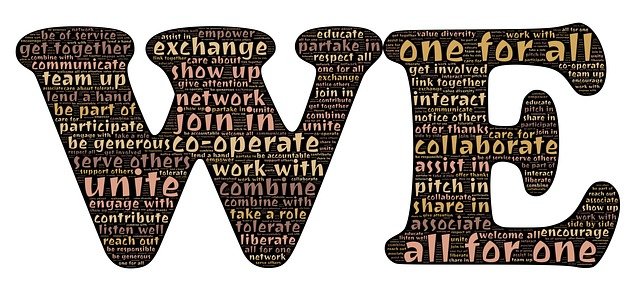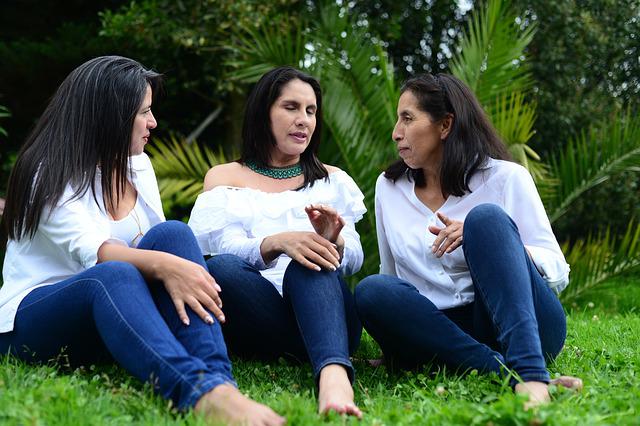After writing multiple posts about personal resilience over the past five years, I have turned my attention to the task of building team resilience. This has always been a challenge for managers but the issues have been compounded by the challenging times we are experiencing at the moment (with the global pandemic, war in Ukraine and elsewhere, economic uncertainty and the differential impacts of climate change and associated global warming). Managers and staff are increasingly facing discontinuities in the way work is done, in where they work and in the nature of internal and external environmental changes.
How then do we go about building team resilience as we are confronted with multiple assaults on many fronts – e.g., on physical and mental health, economic welfare, working conditions, supply and demand, and relationships? More recent writing and research point to a number of factors that contribute to team resilience in these challenging times. I have summarised these as the 10 C’s for ease of access and recollection.
The 10 C’s for building team resilience
Team resilience has been described as “the capacity of a group of people to respond to change and disruption in a flexible and innovative manner”. Even if adverse conditions result in a temporary loss of productivity, the resilient team can restore its balance, take care of affected members and find new ways to work and achieve their goals. They are able to revise their goals, too, where necessary. The 10 C’s of a resilient team are described below:
- Congruence: This is the cornerstone of a productive, mentally healthy and resilient workplace culture. Managers need to ensure that they share their values and align their actions with their words. Congruent leadership inspires, motivates and engages others in the task of personal improvement and innovation. Lack of congruence on the part of a manager adds to environmental uncertainty, derails personal resilience and undermines team cohesion. Team members don’t know what to believe, question their own self-worth and lose confidence in the face of the ambiguity created by incongruent behaviour. Managers need to develop managerial mindfulness so that they are constantly aware of the impact of their words, actions and omissions on the welfare and resilience of their staff.
- Connection: Dr. Erin Raab maintains that “resilience is rooted in relationships” which enable trust and flexibility to develop and grow. Without trust in a team, there is no resilience – individuals withhold information, protect themselves and withdraw (both psychologically and physically). Managers need to be proactive in building connection through established rituals – e.g., regular, productive and focused meetings; celebrations of birthdays and personally significant events such as cultural or religious days; on-boarding and “off-boarding” practices; and regular occasions of eating together (e.g., enjoying shared lunches that reflect the multicultural nature of a team). Foundational to trust and a sense of being valued for contributions to a team, is expression of appreciation given as positive feedback in a way that is sincere, specific, timely and personal. This builds personal self-efficacy, reinforces team values and develops overall team competence and capability.
- Clarity: Along with relationships, Dr. Erin places considerable emphasis on the role of clarity in building team resilience. She maintains that clarity “facilitates communication, increases intrinsic motivation and engagement” and contributes to a team’s capacity to handle change adaptively. At a fundamental level, this involves ensuring that each person understands the specific requirements of their job and are trained and resourced to achieve them. For the purposes of this discussion, clarity includes not only roles and structures but also team values. Lack of clarity around roles/structures can lead to role overlap, role conflict and role ambiguity – each of which can undermine alignment of individual effort with team goals. Clarity about team values is critically important to team resilience. If team values are developed collaboratively, along with the explicit behavioural expressions of those values, they provide agreed guideposts and enable individual and collective alignment with the ethos of the team, facilitating working together productively within an ever-changing environment.
- Collaboration: This includes being conscious of contributing to a team effort (rather than solely absorbed in one’s own tasks) and a willingness to work together and to help out where needed. It also involves moving beyond competition to “committing to build each other’s competence” to enable other team members to be the best they can be. In line with an action learning approach, this can entail providing “supportive challenge” to assumptions or negative self-talk that are holding an individual back and undermining their personal resilience and capacity to contribute to the team. Managers can proactively build collaboration through cross-functional, action learning project teams, establish reverse mentoring (e.g. where new, young staff with specific technological skills mentor older staff in those skill areas) and/or engage in team-building activities such as collaborative problem solving using change tools (e.g., Force Field Analysis or Brainstorming). These activities build overall team competence and capacity to effectively manage change as a team. They also develop a sense of agency amongst team members – the ability to influence their work environment and how their work is done.
- Competence: Conscious efforts to build individual and team competence are an essential element for moving a team beyond its current level of capability. This not only involves providing externally facilitated individual and team training opportunities but also building competence through internal, prioritised knowledge sharing processes, multi-skilling activities and related learning-on-the job opportunities. If people in a team are not developing their knowledge and skills, they are going backwards in terms of a changing environment and its concurrent demands for upskilling. The wider the gap between the present level of team members’ knowledge and skills and that demanded by the internal and external environment, the less resilient the team will be. In contrast, relevant competence building develops a team’s resourcefulness and the process of continuous learning builds a team’s resilience. Having a debrief or reflection process after a mistake or setback, without trying to apportion blame, can provide team members with new insights, ideas, tools and increased capacity to avoid or manage such adverse situations in the future.`
- Candor: LHH and Ferrazzi Greenlight, through their research, identified candor as one of the four critical characteristics of a resilient team, along with compassion , resourcefulness and humility. Candor can be understood as “tell it like it is”. It entails honesty, openness and transparency on an individual as a well as a team level. It is the manager’s role to keep the workplace “businesslike and professional” and a key element of this is providing corrective feedback to an individual where they fail to meet communicated performance and/or behavioural standards. Honesty in this interaction is essential to develop the receiver’s self-awareness, create the opportunity for their skill development and reduce the possibility of disharmony in the team. On a team level, the manager can openly share with the team where they are placed in relation to the team goals and elicit team members help in attaining the goals and/or setting new goals.
- Challenge: Keith Ferrazzi, Mary-Clare Race and Alex Vincent argue that helping team members to own, and share, their workplace challenges, builds trust and openness. This is important on a team level as well as individually. Managers can be open about the challenges facing the team as a whole. I worked with a CEO some years ago who managed an aged care operation with 23 different residential facilities on the one site, each with a separate manager and providing services ranging from respite care to palliative care. What the manager found is that the level of care required by residents was increasing in need, complexity and cost, at the same time that Government funding was reducing dramatically. The manager openly shared this financial situation with his team of facility managers and enlisted their aid in resolving the challenge. The facility managers came up with a number of innovative solutions which enabled the installation to overcome substantial losses. Managers, where possible, can share information about impending organisational changes to build change readiness in the team and to prevent team members from being blindsided by the changes when they occur. In the absence of information, team members fear the worst and start to share rumours that undermine individual’s confidence and the team’s resilience. Sharing information about forthcoming changes can enable a team to collaboratively develop strategies to effectively manage the changes, thus building resilience.
- Compassion: It is important that managers show that they care – not only expressing empathy for staff needs, but also taking compassionate action. This may entail making reasonable adjustments for people experiencing mental or physical health issues. It could involve developing mental health awareness programs that facilitate people effectively managing their own mental health. Another approach involves offering workplace mindfulness training to enable staff to manage stress and build personal resilience in the face of multiple workplace stressors. Mindful organisations develop compassion in all their interactions, including actively listening to each other in the workplace and helping each other through the challenges they experience. Overall, it entails cultivating a care and concern culture where peoples’ welfare comes before task achievement – a culture that can be developed by regular, non-invasive check-ins by the manager as well as by workplace colleagues. Involvement in the RUOK? movement can facilitate the development of this cultural orientation.
- Communication: “Information is power”, so sharing information is sharing power – empowering others to achieve. This involves moving from sharing information on a “need-to-know” basis (often arbitrarily determined by the manager) to a “need-to-enable” basis. People need information to do their job, to understand the organisational context and to align with the organisation’s strategic direction. Managers are interpreters of the organisation’s vision, values and goals and have a critical role in ensuring their staff know where the organisation is headed and why. They can enhance their role in engaging the minds and hearts of staff by enabling collaborative development of a local statement of the team’s vision in line with the organisation’s direction. What mangers say and how they say it can create a positive or negative culture and contribute to team resilience or undermine it. Research has shown that a manager’s mood is contagious. This emotional contagion impacts how a team responds to challenges and setbacks. Managers are encouraged to be positive and avoid cynicism and negativity if they want to build team resilience. They need to be conscious about the impact of their communication and monitor their own talk
- Celebration: Celebrating successes in terms of goal accomplishment or achievement of project milestones, deepens the memory of team members in terms of how they have overcome obstacles and setbacks and serves as a fall-back when future challenges or setbacks arise. Mind Tools provides the research behind the value of savoring team success and offers multiple ways to celebrate team achievements. Celebrations open up the opportunity to share success stories, build cohesion and reinforce positive emotions associated with belonging to the team – all of which adds to a sense of connectedness and team resilience. Another way into savoring team achievement is to engage in an “appreciative inquiry” process with a team. This strengths-based approach works from what is good about the present (revisiting achievements) to envisioning an even better future and innovating to realise this vision.
Reflection
The factors impacting team resilience – the 10 C’s mentioned above – are not discrete influences. They overlap to some degree and reinforce each other. The relationship between different factors is often bi-directional, e.g., connection inspires compassion and compassion, in turn, builds connection. So, acting positively on any one of the factors identified, can strengthen other factors and enhance the impact on team cohesion and resilience. The factors provide a focus for efforts to build team resilience. If a manager wants to achieve a significant change in an organisational/team context, they need to have multiple points of intervention to shift from the status quo to a desired future.
However, trying to focus on all the resilience factors at once can create overwhelm for a manager. Shelly Tygielski, international mindfulness trainer and trauma counsellor, encourages “chunking” when faced with such a mammoth “to-do list” – that is, grouping tasks into like activities (chunks) and assigning relative priorities. A manager, for example, could engage their staff in a Force Field Analysis (FFA) process to identify the helping and hindering forces impacting the goal of developing team resilience and then collaboratively assign a priority to each force to determine what factor(s) to focus on. The 10C’s and their component elements could be used as a checklist during the FFA process.
When writing about personal resilience, Shelly Tygielski encourages “building resilience one step at a time”. On a team resilience level, this involves beginning with a primary focus and progressively adding activities as one intervention is established and stabilised.
As managers grow in managerial mindfulness, they will see opportunities for improving their own practices and develop creative ways to build team resilience. Proactivity is required on the part of a manager if team resilience is to be developed and sustained. Writers in this area often liken team resilience to a battery – needing continual recharging and reenergising.
__________________________________
Image by John Hain from Pixabay
By Ron Passfield – Copyright (Creative Commons license, Attribution–Non Commercial–No Derivatives)
Disclosure: If you purchase a product through this site, I may earn a commission which will help to pay for the site, the associated Meetup group, and the resources to support the blog.









